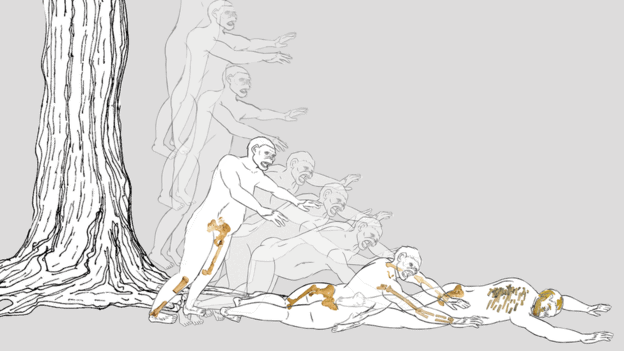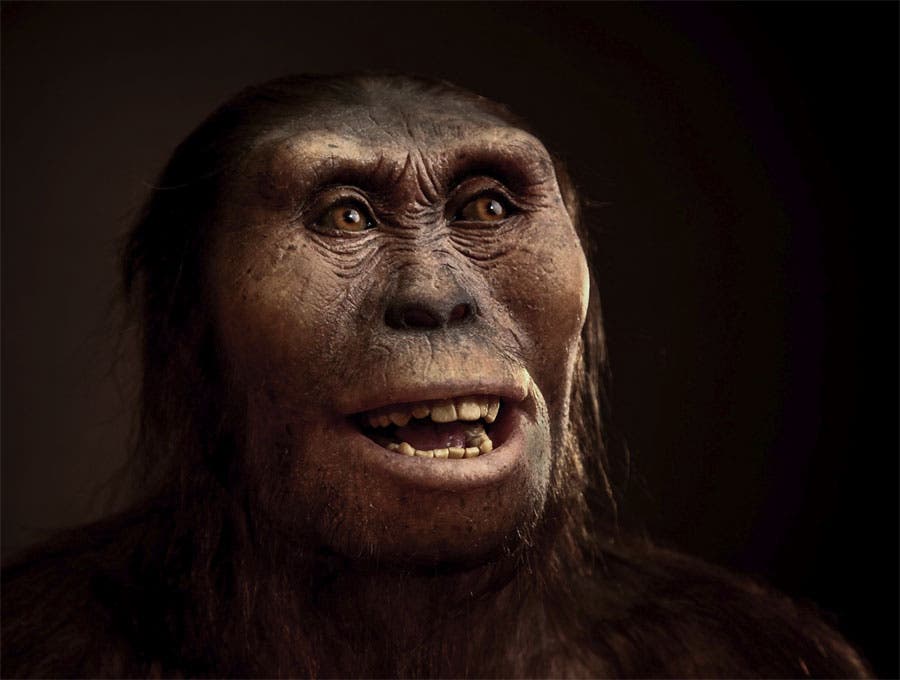No other hominin specimen has been scrutinized by scientists as thoroughly as Lucy — the 3.2-million-year-old Australopithecus afarensis, a human ancestor and one of the first to walk on two legs. When Lucy was first discovered in 1973 in Afar Depression, Ethiopia, she re-wrote the history books being the oldest and most complete skeleton of an ancient early human. More than four decades later, we’re still learning new things about her thanks to modern technology. For instance, we now have solid evidence that suggests Lucy died by falling from a tall tree.
The researchers from the US and Ethiopia who were responsible for the study argue a “vertical deceleration event” — science-speak for falling — is what ultimately killed Lucy. CT scans of the skeletal remains showed that the shoulder joint was crushed similarly to medical cases in which people falling reach out their arms to break the impact. Fractures of the ankle, leg bones, pelvis, ribs, vertebrae, arm, jaw, and skull were also reported.
“We weren’t there – we didn’t see it – but the subset of fractures that we’ve identified are fully consistent with what’s reported in a voluminous orthopaedic surgical literature about fall victims who have come down from height,” said lead author John Kappelman from the University of Texas at Austin for the BBC.
“It’s tested every day in emergency rooms all around the planet.”

Reconstruction of Lucy’s potential fall from a tree that might have ultimately killed her. Credit: JOHN KAPPELMAN, UT AUSTIN
Of course, these sort of fractures were noticed years ago, but then again most fossils become fractured. The challenge lies in differentiating between actual injuries and subsequent degradation at the hand of the intervening millennia. This is where the CT scans came in, which showed several of Lucy’s fractures were “greenstick” breaks, according to Kappelman et al. This means that the bones bent and snapped like a twig, something that only can happen in healthy bone, while the victim is still alive.

Lucy’s fractured humerus. The top bone is a full reconstruction of the original fragment below. Credit: ADRIENNE WITZEL, UT AUSTIN
The bones also show no sign of healing. The obvious conclusion is that the fall killed Lucy. This would also mean that Lucy and others from her tribe might have spent more time clinging in trees than some paleontologists think. After all, A. afarensis is the poster child for early human bipedal locomotion.
“From the waist down, Lucy’s bones are clearly adapted to a terrestrial, bipedal walking. But from the waist up, Lucy has an upper body that looks like that of any tree-climbing ape,” said Dartmouth anthropologist Nathaniel J. Dominy for the Washington Post, who wasn’t involved in the study. “Everyone agrees that Lucy walked upright, but did she climb trees occasionally or never at all?”
Some critics, however, argue that the paper doesn’t provide evidence to prove that Lucy succumbed to a fall. The pelvic fracture could have been made by a scavenger who took a swipe at Lucy after she died of natural causes (there are no traces of an attack on her remains).
For now, Lucy’s cause of death is still a matter for debate, although the University of Texas study offers a compelling explanation. Whatever’s the case, Lucy’s story is far from being over.










